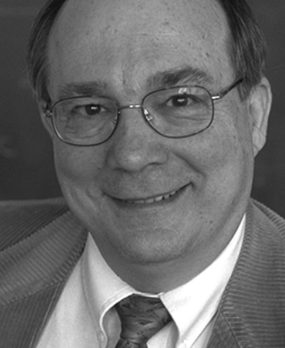Robert Vince:
How he has transformed the scene
One little drug; millions of lives changed
Ziagen: It's a small yellow capsule-shaped tablet, stamped with GX623. It sits inconspicuously alongside hundreds of drugs that line pharmacy shelves. Yet, the impact of this innocuous-looking little pill is immense. Millions of people around the world infected with HIV/AIDS take this medication every day and enjoy lives that are longer and healthier than could have even been imagined just a few decades ago, when AIDS was considered a slow, unstoppable death sentence.
This is due in large part to the work of Robert Vince, a medicinal chemist who today leads the prestigious Center for Drug Design at the University of Minnesota's Academic Health Center.
From Boyhood Basement Lab Experiments to the Real Deal
Vince discovered early on that he had an interest in science. He used his pocket money to mail-order replacement chemicals for his Gilbert Chemistry set, and also "things of science" — stuff like instructions for making pinhole cameras or compasses — from his weekly Science Newsletter. His dad helped him set up a modest chemistry lab in the basement of his childhood home in Auburn, New York, where he spent a lot of time tinkering on various experiments.
Vince fondly remembers creating home-made rocket fuel. "One time a spark went into the big mortar — and it had sulfur and everything — and my mother was upstairs talking on the phone, and it all went up, we had registers back then, we had these big furnaces in the basement. And she started screaming, you know, she thought the house was on fire."
Fortunately, that fire was doused, but Vince's interest in a science career was not. The first member of his family to go to college, he obtained a bachelor's degree in pharmacy in 1962 and a Ph.D. in medicinal chemistry in 1966 from the State University of New York (SUNY) in Buffalo. In 1967, he joined the Medicinal Chemistry faculty at the University of Minnesota, with a starting salary of $12,000. He's been there ever since.
Improving Lives & Learning Lessons
It's extremely rare for a drug developed in an academic setting to make it all the way to pharmacy shelves. Vince accomplished this twice, with some hard lessons learned along the way.
Before there was AIDS, there was herpes. At one point, herpes was a major public health issue in the United States. As an assistant professor, Vince had an idea for an anti-herpes drug he called cyclaradine. Excited to share his findings, he presented information about cyclaradine — a drug which actually wipes out the herpes virus —at a conference, thereby putting the information into the public domain, but without a patent in place to protect the idea.
After that, no pharmaceutical company would invest in developing cyclaradine. With most drugs taking 12 years and $1 billion dollars to make it to market, pharmaceutical companies knew they could not recoup their investment. So they encouraged Vince to develop a derivative of cyclaradine that could be patented. However, a patentable derivative that was equal to cyclaradine could not be made.
Meanwhile, Vince's earlier design of acycloadenosine from his graduate days was developed into acyclovir (now called valacyclovir)— the biggest selling anti-herpes drug in the world. However, unlike cyclaradine, acyclovir must be taken indefinitely, or the herpes virus returns. Although acyclovir is a success in its own right, the missed potential of cyclaradine still haunts Vince. He reflects "I to this day feel as though that [cyclaradine] is the best drug for herpes, but it will never get developed. And so, it would have been better probably if we had never invented it. Maybe if a company did, they would have patented it. So I learned a lesson about patents…if you don't protect it, no one will develop it….I'm still thinking of ways we can revive this thing."
That was 1976. Fast-forward to 1987, when Vince was realized he had an AIDS-fighting-machine in Ziagen. You can bet he patented that right away. He fondly recalls the phone call he received at home on a Saturday from the National Institutes of Health, letting him know they were interested in Ziagen, and asking him to patent it. He was pleased to be able to say he'd already done so.
And thus, Ziagen was secured. But getting it into the hands of people suffering from HIV and AIDS was still an arduous process. Slow-moving bureaucracies, complex licensing lawsuits (which produced more than 100,000 pages of court documents!) and other delays meant that it wasn't until 1999 that Ziagen finally made it to market — and more importantly, to sick people around the world.
Still Developing Drugs & Defeating Diseases
To date, the University of Minnesota has received more than $600,000,000 in royalties from worldwide sales of Ziagen. In 2002, the University used that money to create the Center for Drug Design, led by Vince. There, his staff of 60 researchers seek treatments for a variety of ailments — everything from cancer and Alzheimer's to cosmetics that actually repair the skin. Vince stopped taking a salary from the University in 2000, and instead uses his royalty fund to cover his salary.
Vince's esteemed career has been recognized with numerous awards and honors, among them a career development award from the National Cancer Institute (1972-76), University of Minnesota Scholar of the Year award presented by Phi Kappa Phi National Honor Society (1979), a Certificate of Commendation from Minnesota Governor Rudy Perpich (1989), named fellow of the American Society for the Advancement of Science (2000), selected to meet with President George Bush (2002), recognized on the University of Minnesota's "Scholars Walk and Wall of Discovery" (2006), and received an honorary doctorate of science from SUNY of Buffalo (2010), among many others.
Vince and his wife enjoy the solitude of their hobby farm (complete with nine horses) in Wisconsin. He has two grown daughters and seven grandchildren, including two sets of twins.

